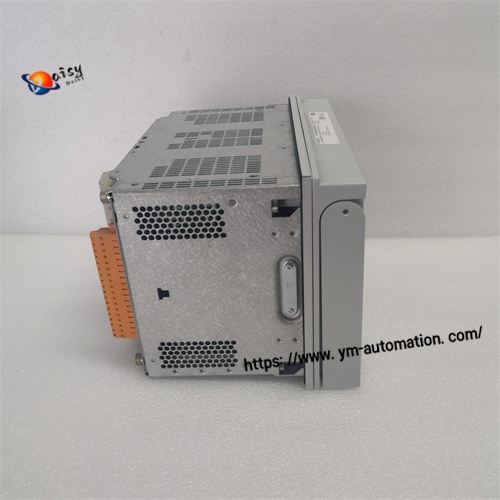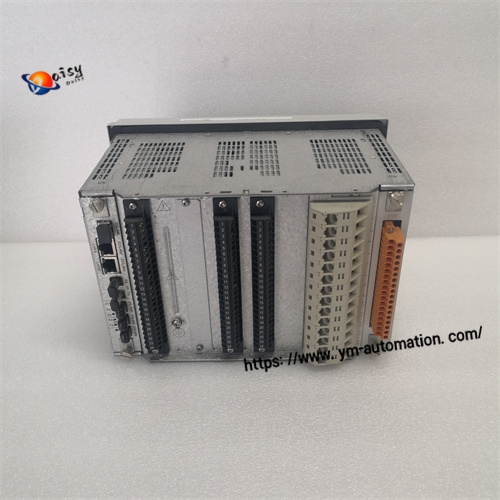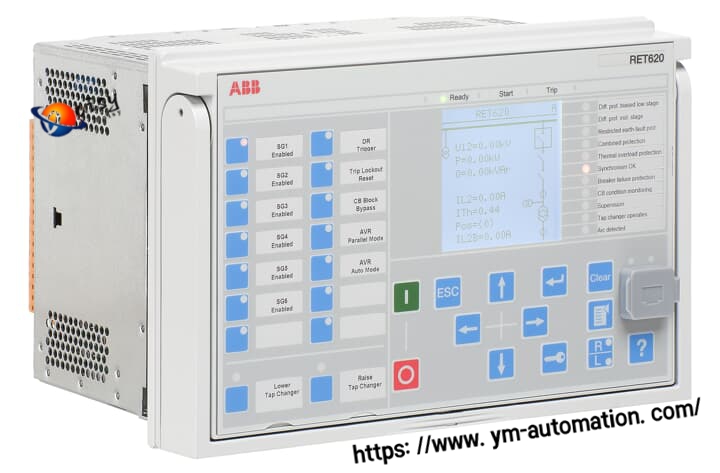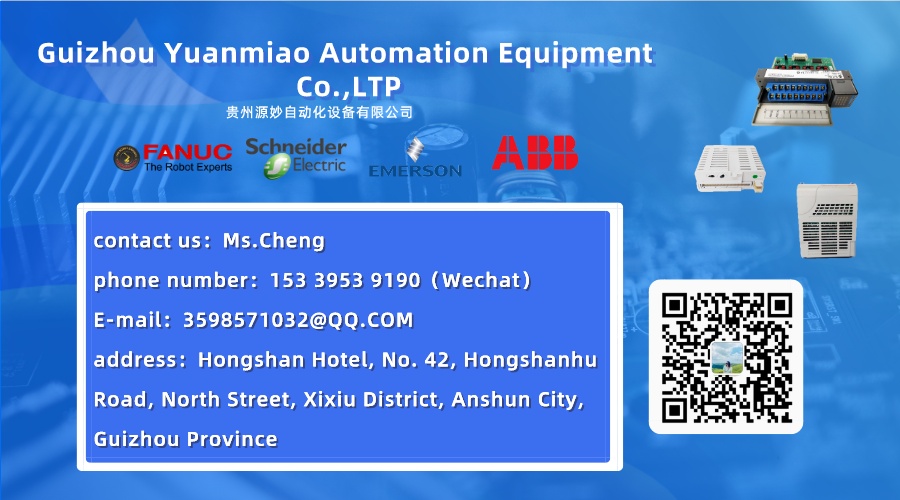The RET620 is an advanced transformer management relay, mainly used for protection, control, measurement, and monitoring of power transformers. It is suitable for utility and industrial distribution networks, including two-winding power transformers and generator-transformer units.
- Operating Temperature: -25°C to +55°C
- Humidity: 5% to 95%, non-condensing
- Communication Protocols: Supports IEC 61850 Edition 1 and 2 (including HSR and PRP redundancy), Modbus, DNP 3, and IEC 60870-5-103
- Time Synchronization: Achieves high-precision time synchronization via the IEEE 1588 v2 Precision Time Protocol (PTP)
- Differential Protection: Features advanced differential protection with high speed and inrush current stability, enabling rapid detection of turn-to-turn faults in transformer windings.
- Earth Fault Protection: Supports high-impedance or low-impedance restricted earth fault protection principles. No time coordination with other protection schemes is required, allowing for high-speed fault clearance.
- Other Protection Functions: Includes overcurrent protection, thermal overload protection, overexcitation protection (V/Hz), arc protection, etc.
- Voltage Regulation: Optional integrated voltage regulation function for transformers equipped with electric on-load tap-changers (OLTCs).
- Trip Circuit Supervision and Self-Supervision: Equipped with trip circuit supervision and self-supervision functions to ensure reliable operation of the device.
- Event Logging and Disturbance Recording: Offers extensive event logging and disturbance recording capabilities, which can be used for fault analysis and system diagnosis.
- Power Systems: Used for transformer protection and control in utility and industrial power distribution systems, such as substations and power plants.
- Industrial Sectors: Suitable for various industrial sites requiring precise transformer management, including steel plants, chemical plants, and cement plants.
The RET620 continuously monitors the operating parameters of the transformer (such as current, voltage, and temperature) in real time by connecting to various sensors (e.g., current transformers, voltage transformers). When an abnormal condition or fault is detected, it quickly issues a trip command based on preset protection logic and setting values to disconnect the transformer from the power grid—protecting the safety of the transformer and other equipment. Meanwhile, it can communicate with substation automation systems or other devices via communication interfaces, enabling remote control, monitoring, and management.

















